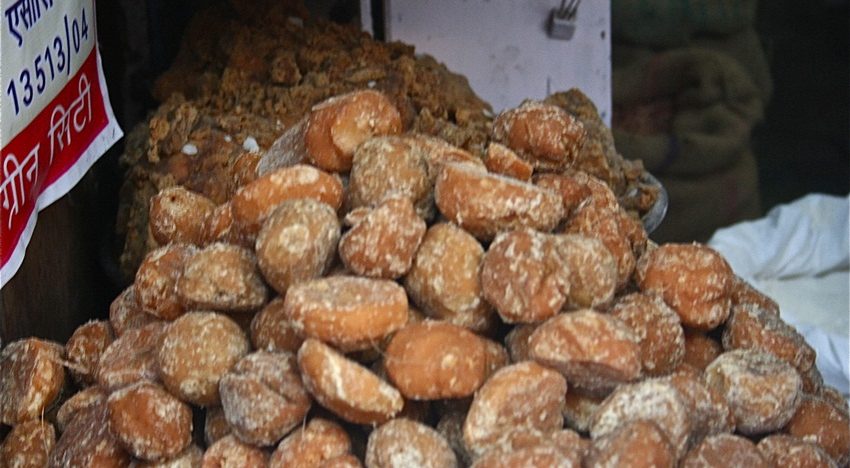Photograph by Nagarjun Kandukuru/Flickr
While dieticians have been pushing jaggery as an alternative to white sugar, we’re saying don’t give up one to enjoy the other. Gur or unrefined sugar is most commonly made by boiling sugarcane juice, but there are other varieties of gur such as the nolen gur, a Bengali delicacy made of date palm and the Sri Lankan kithul, a treacle made from coconut sap, which is a much-loved ingredient used in their desserts. There’s a reason why a lot of sweets made during festivals including the ukdiche modaks made for Ganesh Chaturthi in Maharashtra and adirasams made during Deepavali in South India are filled with the goodness of jaggery. Here are some benefits of indulging in jaggery.
Rich in iron, jaggery can help increase the haemoglobin levels in blood and reduce the risk of anemia.
Ayurvedic diets recommend the intake of small quantities of jaggery every day because it flushes out toxins from the liver.
Jaggery builds immunity. Since it contains zinc and selenium, which are known to be immune boosters, jaggery is also an effective anti-oxidant and fights infections.
It is used in desserts also because jaggery works as a great digestive and stimulates the digestive enzymes.
It helps reduce water retention in the body, which is also why it is recommended by nutritionists.
The potassium content in jaggery helps improve metabolism, build muscle growth and maintain the body’s electrolyte balance. It also regulates hormonal imbalances in women and is known to help reduce menstrual pain.










